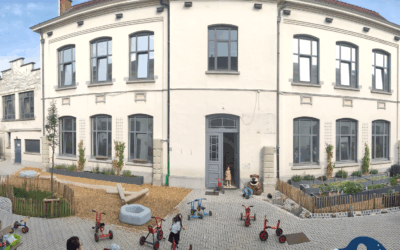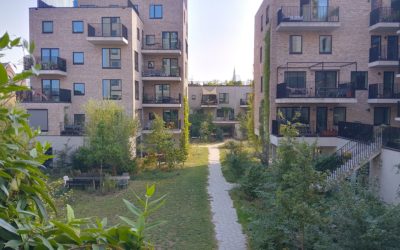The city supports EcoSchools that focus on climate with coaching and a subsidy of up to 30,000 euros.
IPON’s construction projects
The project
IPON integrates a sustainable green concept into all its construction projects, in which living and nature go hand in hand.
For each project, a planting plan is drawn up by a landscape architect, which is legally enshrined in the environmental permit and translated into binding green regulations. These green regulations form an appendix to the project’s articles of association. In this way, landscaping — both on private and communal areas — becomes an essential part of the residential project.
The green regulations provide tips on which native plants can be used and how residents should plant and maintain them. Each buyer signs these regulations when purchasing their home, ensuring that the ecological added value is maintained in the long term.
In addition, when signing the preliminary agreement, buyers receive the book “De wilde tuin” (The Wild Garden), which IPON reissued with a landscape architect to inspire residents to garden in a nature-friendly way.
A concrete example of this approach is the group housing project in Boombosstraat in Laarne, where six single-family homes and a communal green parking area have been developed according to this principle.
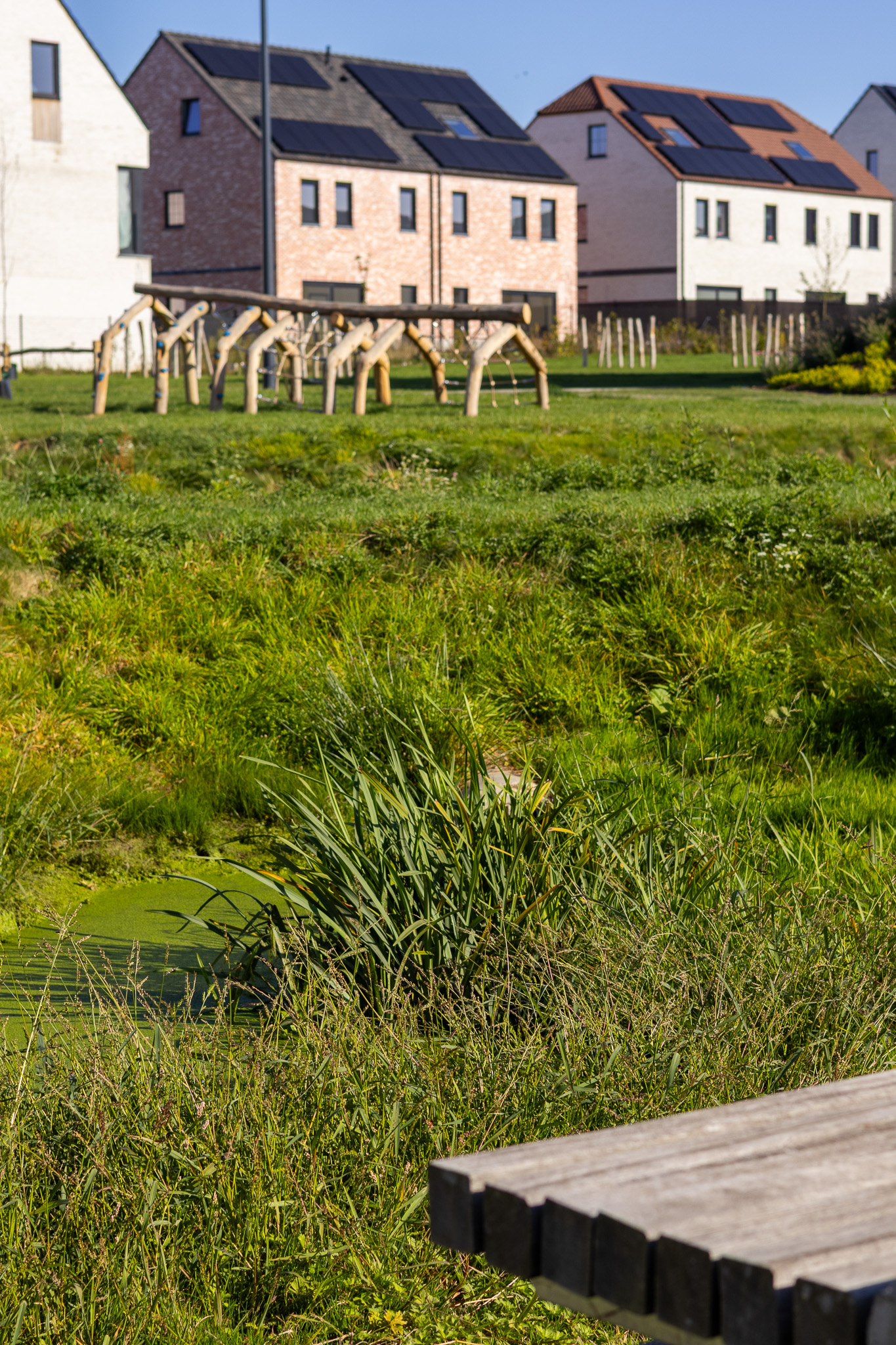
Project location
Contribution(s)
Project costs
Participant(s)
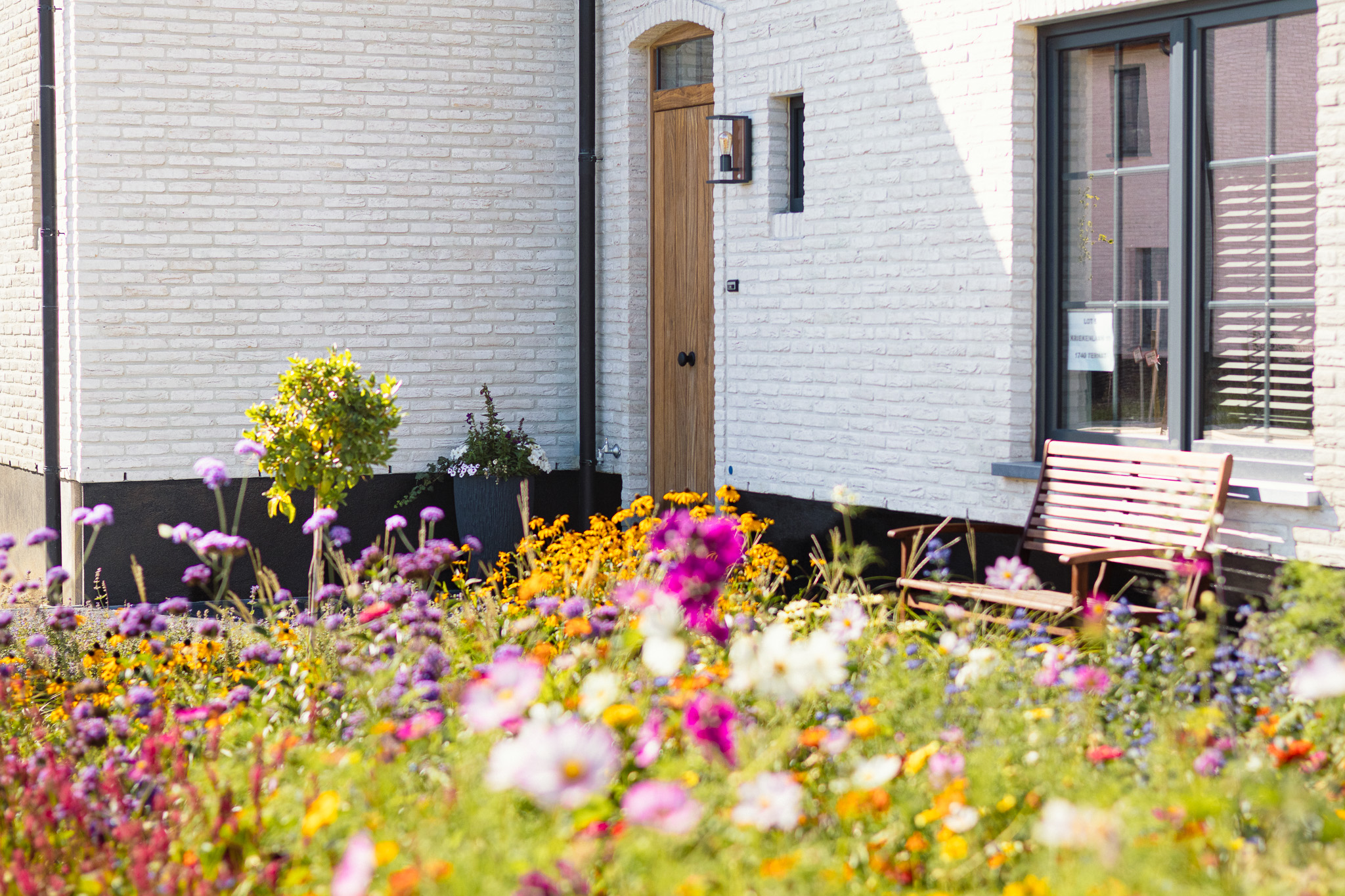
- Landscape architects: drafters of the planting plans and accompanying green booklets.
- Buyers/owners of the homes: responsible for the implementation and maintenance of the planting plan.
- Local authorities: grant the environmental permit in which the green structure is included.
How are the criteria of the objective met?
Buildings and infrastructures
- As little alteration of the initial landscape as possible /as much naturalness as possible to replace grey and concrete surfaces (e.g. green roofs and walls, greening the surroundings, incorporating the existing landscape into the infrastructure);
- Respect and/or improve the specific ecological characteristics of the area (e.g. the topography, the type of landscape, the local plant and animal life) to effectively replace the gray/concrete surface;
- Incorporate the amenities into the surrounding area and environment;
- Use native species/subspecies that are more resilient and resistant to climate change, if appropriate;
- Incorporate elements that are suitable for the local biodiversity (e.g. birdhouses suitable for the bird species on site, insect houses at an appropriate height, appropriate vegetation types);
- Provide amenities with sufficient space/length/thickness to ensure the creation of habitats, green-blue areas and veins;
- Construct buildings while maintaining green and blue areas, and while limiting further urbanization and urban sprawl (e.g. a higher building or a multi-story car park requires less surface on the ground).
Possible initiatives in which the project is involved :
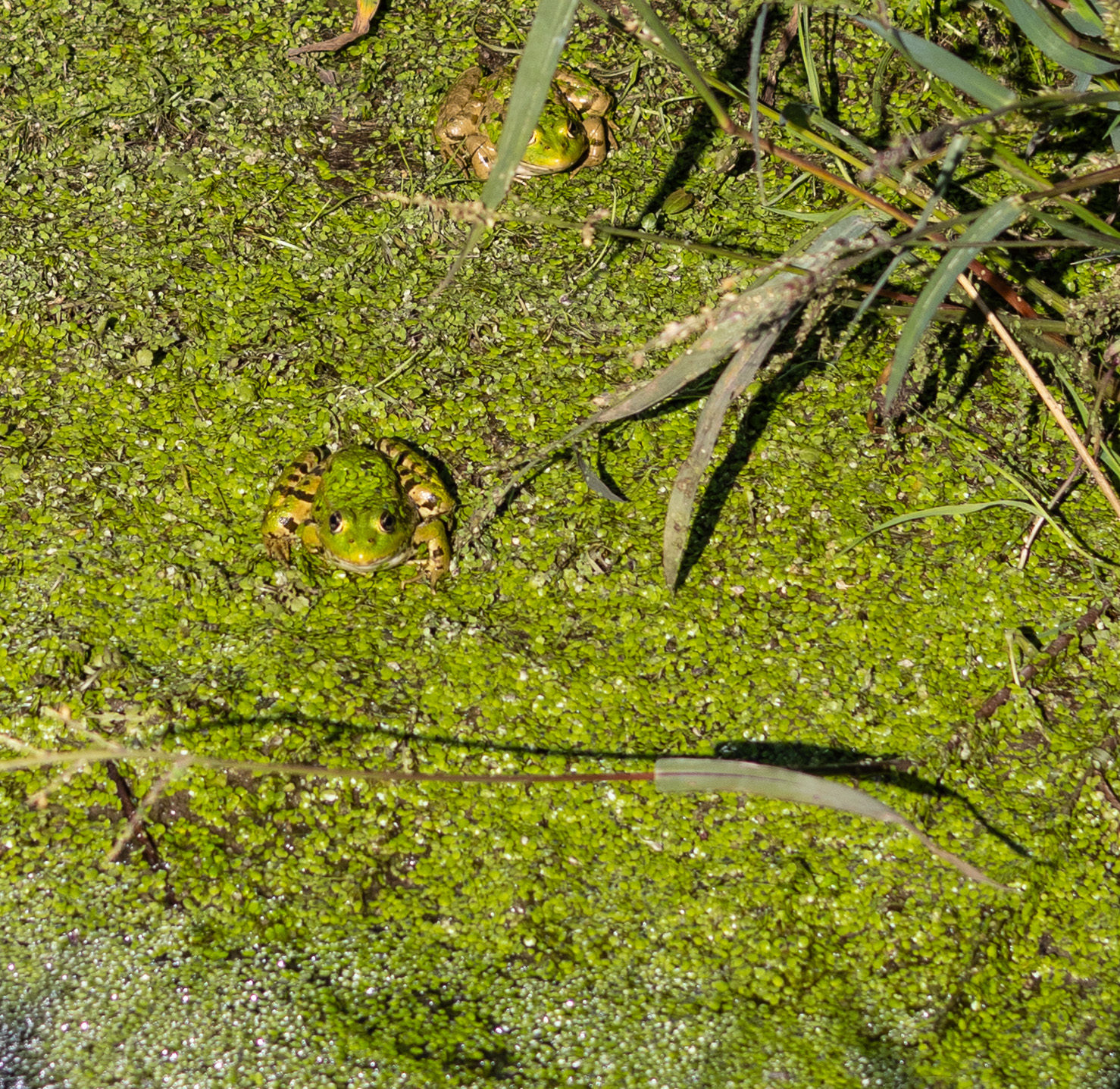
Long-term maintenance
Compliance with the planting plan is legally enshrined in the environmental permit and in the deed of division that each buyer signs.
Every owner is obliged to maintain the green structure, to maintain it in an environmentally friendly manner and to replace any dead or diseased plants.
IPON has been applying this system for decades and has found that, in practice, the mandatory landscaping is respected and well maintained in almost all cases.
Benefits
- A pleasant, green living environment that contributes to quality of life and a sense of community.
- Raising awareness about nature-friendly gardening through the book ‘The Wild Garden’ and the accompanying green booklet.
- Use of native plants that support local fauna.
- Strengthening local ecosystems and natural water management.
- Limiting pesticide use and creating natural structures (such as hedges, ponds or picking forests) that provide habitat for birds, insects and small mammals.
Other projects linked to the objective: "Buildings and infrastructures"
Opération Ré-création
Bringing nature into school playgrounds.
Bijgaardehof and Bijgaardepark
Abandoned factory site is being transformed into a park extension and collective housing project that integrates biodiversity.

